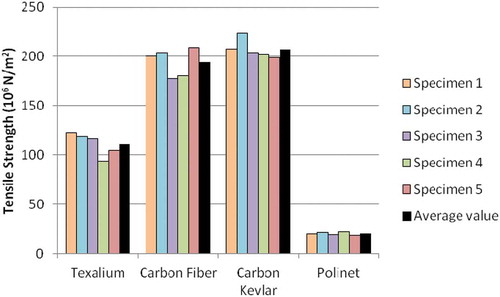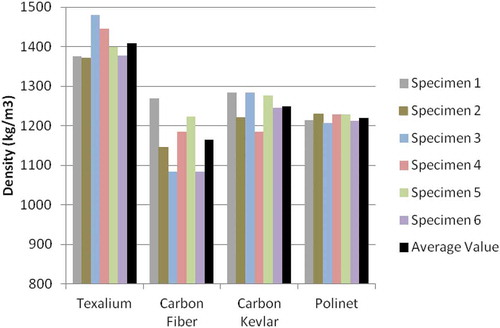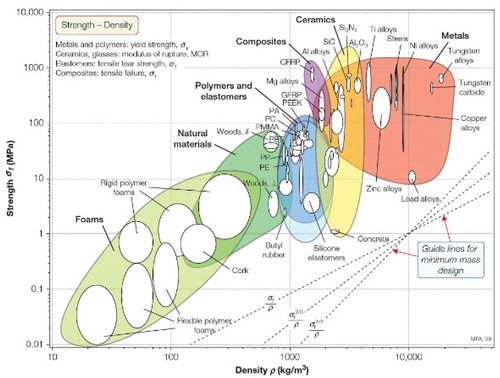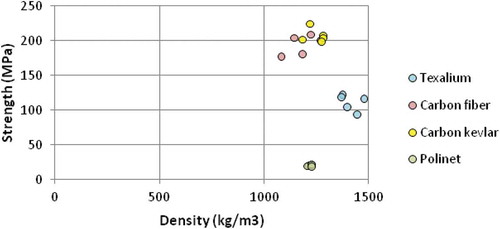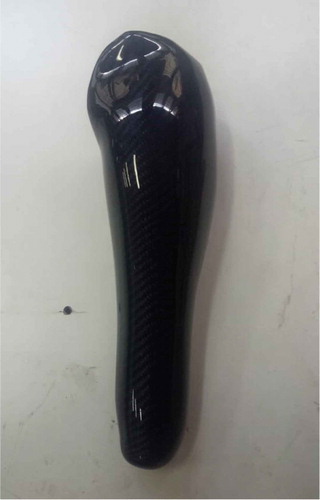Abstract
World Health Organization (WHO) estimates that 35–40 million people in developing countries are amputees. One of the problems faced in developing countries is the lack of trained personnel in making prosthetic and to order a prosthetic limb abroad would not be practical and would require a large fee. Thus, amputees in developing countries rely on local prosthetic manufacturers. However, due to the lack of expertise, prosthetics that are manufactured in developing countries are only made of a fiber-like material or wood with a resin matrix. This mixture of material gave rise to problems for the amputees, due to its heavy nature. It has been found that there is a growing trend in the use of Advanced Composite Material (ACM) in several fields in developing countries. One of which is for the application of prosthetic sockets due to its strength to weight ratio and biocompatibility. This research will be carried out with the intent of selecting the most appropriate advanced composite-based material for a prosthetic arm socket. This research will also add additional research data by tensile and density test for each material alternatives referring to the ASTM standard. Based on the research that has been done, it is found that carbon kevlar among other things, has the highest strength among other alternatives (207.18 × 106 N/m2) and an adequately low density (1248.85 ± 0.098 kg/m3). Thus, carbon kevlar is selected as the most appropriate material because of its best performance value among other alternatives.
PUBLIC INTEREST STATEMENT
World Health Organization estimates that 40 million people in developing countries are amputees. One problem faced in developing countries is the lack of trained personnel in making prosthetic and to order a prosthetic limb abroad would not be practical and would require a large fee. Thus, amputees in developing countries rely on local prosthetic manufacturers. However, due to the lack of expertise, prosthetics that are manufactured in developing countries are only made of a fiber-like material or wood with a resin matrix. This mixture of material gave rise to problems for the amputees, due to its heavy nature. It has been found that there is a growing trend in the use of Advanced Composite Material in several fields. Due to its high strength and lightweight, advanced composites are a suitable option for the application of prosthetic sockets. This research will compare advanced composites' quantitative and qualitative traits.
1. Introduction
The World Health Organization [WHO] (Citation2017) estimates that 35–40 million people in developing countries are amputees. The most common cause of amputations in developing countries such as Nigeria is trauma, infections, and diabetes (Olasinde et al., Citation2002). While for developing countries that are currently at war like Iran and Afghanistan, amputations are commonly caused by accidents of warfare such as wounds from gun fires and landmines (Taghipour et al., Citation2009).
Properly constructing a prosthetic limb requires a high level of skill. One of the problems faced in developing countries is the lack of trained personnel in making prosthetic and to order a prosthetic limb abroad would not be practical. Moreover, it will require a large fee to order abroad. Thus, amputees in developing countries rely heavily on local prosthetic manufacturers. A prosthetic arm consists of two basic components: the socket, which is where the patient’s stump will connect to the prosthetic limb, and the artificial hand, which is the replacement limb that is amputated. Due to the lack of expertise of local prosthetic manufacturers, prosthetic sockets that are manufactured in developing countries are only made of fiber-like material (ex: natural fibers or synthetic fibers) or wood with a resin matrix. This mixture gave rise to problems for the amputees. Due to the heavy nature of this mixture, the manufactured prosthetic will increase the users’ energy expenditure. According to May (2011), a prosthetic hand socket must be strong, but also lightweight to lower the users’ energy expenditure so it can be functional. The total mass of a human arm is 5.1% of their total body mass (Chaffin et al., Citation2006). According to the Webb Associates, Space Administration (Citation1978) the arm can be segmented into the upper arm (54.9%), forearm (33.3%), and hands (11.8%). A prosthetic arm to be regarded as lightweight, especially for transradial prosthetics (below elbow), is not permitted to exceed 4.5% of the total mass of the body of the user. Due to the heavy nature of this mixture, the manufactured prosthetic will increase the users’ energy expenditure, thus making the prosthesis less functional.
Poonekar (Citation1992) identifies a number of material criteria that should be satisfied for designing a prosthetic in developing countries, this includes: durable; lightweight; locally available; capable of manual fabrication; considerate of local climate and working conditions; technically functional (not gratuitously “high tech”); and adequately cosmetic. Another criterion to consider is the fit of the socket. The material that is used needs to be capable of forming complex shapes so it can be installed comfortably to the users' stump (Klasson, Citation1985). There are two types of prosthetics, mechanical, and cosmetic. Mechanical prosthetics offer the ability of basic hand activities like grasping and holding, while cosmetic prosthetics only give the appearance of a normal limb as if it has not been amputated. However, due to a culture where amputees are ashamed of their lost limbs, amputees in developing countries prefer cosmetic prosthetics (Strait, Citation2006).
Haruna et al. (Citation2014) show that there is a growing trend in developing countries for the use of Advanced Composite Material (ACM) in several fields. Advanced Composite materials are used in many fields such as aerospace (Morimoto et al., Citation2017), and construction (Ahmed, Citation2018). Advanced composites are also found to be a suitable option for the application of prosthetic sockets. This is supported by Scholz et al. (Citation2011) that argues that advanced composites are a suitable option for biomedical application, such as prosthetics due to its superior strength to weight ratio and excellent biocompatibility. One example is Walbran et al. (Citation2016) that designs a carbon fiber composite spring joint for an ankle-foot orthosis. Moreover, Advanced composites are generally available in the form of a fabric that provides the ability to form to complex surface. Advanced composites also provide an interesting aesthetic due to its multiple patterns and colors.
Based on the background, this study aims to select the most appropriate advanced composite-based material for use of a prosthetic arm socket in a developing country. This is a multi-criteria problem that involves qualitative and quantitative criteria. The process of material selection begins with a development of prosthetic arm socket requirements. The requirements will be further explored to obtain prosthetic socket criteria and sub-criteria. Delphi method is used to confirm the criteria and sub-criteria. The Delphi method is a method of harmonizing the process of communication within a group so as to get a consensus solution to the problem of complex (Rowe, Citation2007). The criteria and sub-criteria are then passed through a series of weighing and normalization process to give performance value to each alternative.
2. Methods
This research follows a particular material selection process which will be further explained in the flowchart shown in Figure .
The material selection process begins with a literature study to develop the requirements of prosthetic Sockets. The requirements of prosthetic socket will be further explored to obtain prosthetic socket criteria and sub-criteria. The next step is to confirm the criteria that have been developed in the previous step using Delphi method in the form of a questionnaire with the help of a number of experts. Experts have the right to approve, disapprove, or give suggestions as additional criteria or sub-criteria. This step is done repeatedly until all experts reach a consensus. The weight value of each criteria and sub-criteria is then calculated in the form of another questionnaire with the help of a number of respondents. Respondents will compare each criteria and sub-criteria with a paired comparison (pairwise) and give a rating to each criteria and sub-criteria from a set value scale.
Advanced composite material alternatives are then selected with the consideration of the availability in the area of research. The alternatives are then put through a standardized test that corresponds to the criteria of strength and weight per unit of volume. Each alternatives are must be made into standardized samples to be tested. The samples of said tests can be seen in Figure and Figure respectively. The criteria of strength will be measured by tensile strength while the criteria of weight per unit of volume will be measured by the density of the material. The tensile test refers to the ASTM D638 standard, while the density test refers to the ASTM 792–08 standard. From the tests that are conducted, the tensile and density of each alternatives are pictured in Figure and Figure respectively.
Figure 2. (a) Carbon Fiber specimen for tensile test. (b) Texalium specimen for tensile test. (c) Carbon Kevlar specimen for tensile test. (d) Polinet specimen for tensile test
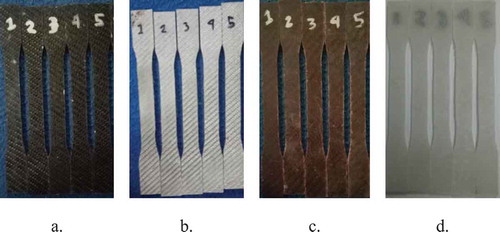
Figure 4. (a) Carbon Fiber specimen for density test. (b) Texalium specimen for density test. (c) Carbon Kevlar specimen for density test. (d) Polinet specimen for density test
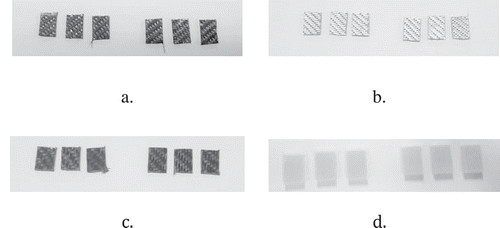
The next step is to calculate the weight value of each material alternatives based on each sub-criteria. Sub-criteria which have a quantitative nature are calculated using maximum value and minimum value normalization method to obtain its weight value. While sub-criteria with a qualitative nature are passed through a series of normalization and weighing processes from a paired comparison (pairwise) process with the help of a number of respondents that will give a rating to each sub-criteria from a set value scale. The weight value of the criteria, sub-criteria, and alternatives are then used to calculate performance values for each alternative. The alternative with the highest performance value will be deemed as the most appropriate material to be used as a prosthetic arm socket.
3. Results and discussion
In constructing a proper prosthetic hand socket, there are some properties that are worth noting. According to May (2011), a prosthetic hand socket must be strong, but also lightweight to lower the users’ energy expenditure so it can be functional. A product is regarded as functional if it has the function as intended (McArthur et al., Citation2004). To be regarded as functional, a prosthetic socket should meet two sub-criteria, namely strength and lightweight. Strength is measured by the tensile strength and lightweight is measured by the density of each alternative. Another criteria to consider is the fit of the socket. The material that is used needs to be capable of forming complex shapes (custom fit) so it can be installed comfortably to the users' stump (Klasson, Citation1985). The custom-fit criteria concerns the process of prosthetic manufacture. The method that is used in manufacturing a prosthetic, especially in a developing country is hand lay-up, the material is cut and pasted on a cast using resin matrix repeatedly until a desired thickness (Hartono et al., Citation2016). Thus, the sub-criteria that should be considered is the ease of cutting and the capability of forming in the prosthetic socket cast. Murray (Citation2009) suggests that aesthetic should also be considered as a criteria. From what is established, it is understood that amputees from developing countries also give an eye on the aesthetic of the prosthetic. Prosthetic with an attractive aesthetic will give users more confidence in wearing it. The aesthetic of a product is determined by the color, pattern, and texture of the product (McArthur et al., Citation2004). In the context of a prosthetic socket, different materials will offer different colors, patterns, and textures.
Delphi method is used to confirm the criteria and sub-criteria that have been established. A questionnaire was filled out by parties with experience regarding the subjects that are discussed in the research (expert). If a disagreement or recommended changes by the expert occurs, then it needs to be communicated with each expert to obtain an agreement/disagreement of the change (Rowe, Citation2007). This process is repeated until all of the experts reach a consensus. The experts of this step consist of advanced composite material experts from MaliqComposites Yogyakarta, prosthetic manufacturers from Balai Besar Rehabilitasi Sosial Bina Daksa (BBRSBD) Surakarta, and advanced composite experts from the Sebelas Maret University Surakarta. The first round of questionnaire shows that not all experts agreed to all of the criteria that have been established. On the functional and custom fit criteria, all expert approve each criteria and sub-criteria. However, in the aesthetic criteria, the texture sub-criteria is judged less suitable. This decision was based on the advice of one advanced composite material expert. He argues that the resulting texture of each material will be the same because of the resin finish. In addition, the advanced composite expert also suggested to add another sub-criteria, namely resistance to fracture, tear, and fraying in the custom fit criteria because it is influential on the final results of the socket. Results from the second round of the questionnaire achieved a consensus between all experts.
The weight value of each criteria and sub-criteria is then calculated with the help of a number of respondents who will compare each criteria and sub-criteria with a paired comparison (pairwise) and give a rating to each criteria and sub-criteria from a set value scale. Another questionnaire is distributed to respondents consist of advanced composite material experts from MaliqComposites Yogyakarta, prosthetic manufacturers from Rehabilitasi Sosial Bina Daksa (BBRSBD) Surakarta, advanced composite experts from the Sebelas Maret University Surakarta and transradial (below elbow) prosthetic arm users. Table shows the results of the criteria and sub-criteria weighting.
Table 1. Expert consensus result of prosthetic arm socket criteria & sub-criteriacriterias
Table 2. Calculation results of maximum value and minimum value normalization method
Table 3. Performance value calculation results of advanced composite alternatives
Four materials were selected as alternatives for this study consist of carbon fiber, carbon kevlar, and texalium due to its availability in the area of research and polinet due to its use as the usual material for manufacturing prosthetic arm sockets in developing countries. The advanced composite that is used in the research is twill woven 3 k fabrics, while the polinet used in this research is a product of PT. Sinaraya Nugraha Ahmadaris Medika, Pasuruan, East Java, Indonesia. A laminate composite is made with the hand lay-up method at room temperature (25–30°C) consists of four layers of material with symmetrical fiber orientation until a product with a thickness of 3.2 ± 0.4 mm (ASTM D638, Citation2014) is produced. Polyurethane resin and hardener with a ratio of 1:1 is used as a matrix that is used to make the specimen. Specimens used in the test are cut pieces from the laminate that was made before. The dimensions of the tensile test specimen refer to the ASTM D638 type I standard, while the dimensions of the density test specimen refer to the ASTM D792-08 standard.
Tensile test is done using the SHT4000 Series Servo Hydraulic Universal Testing Machine at room temperature (25–30°C). Speed of testing according to the ASTM D638 type I standard is 25% ± 5 mm/min. The dimensions of the specimen are 165 mm × 13 mm × 0.5 ± 3.2 ± 0.4 mm. A number of five specimens are tested for each material. The average value of the test results of each specimen along with the standard deviation will be presented as the tensile strength value of each material.
Based on the results of the tensile test, it can be seen that advanced composites have a higher tensile strength than polinet. From the results, it is found that carbon kevlar had the highest tensile strength (207.18 ± 25.21 MPa), followed by carbon fiber (194.18 ± 31.59 MPa), texalium (111.1 ± 28.45 MPa), and polinet (20.23 ± 3.01 MPa).
Density test is done using an analytical balance. The test specimens are small pieces of the laminate that was made before. The specimen thickness is not less than 1 mm for each 1 g weight of the specimen. Each specimen is placed in a container (steel wire mesh) which is hanging on the analytical balance using a wire hook and it is weighed in air and submerged in liquid. The liquid used is water with a temperature of 23°C (ρ = 997.5412 kg/m3) (ASTM D792-08, Citation2008). Specimens are coated using plasticine to prevent water absorption.
As many as six specimens tested for each material, the average value of the test results of each specimen along with the standard deviation will be presented as the density value of each material. Based on the results of the density test, the density of advanced composites is not much different from the density of polinet. Carbon fiber (1164.74 ± 0.109 kg/m3) has the lowest density, lower than the density of Polinet (1219.91 ± 0.186 kg/m3), followed by carbon kevlar (1248.85 ± 0.098 kg/m3) and texalium (1407.79 ± 0.021 kg/m3).
Figure shows a material property chart that describes the relationship between strength and density of materials. Strength–density material property chart is used for designing light, strong structures. Each bubbles describe a material classification according to the value of its properties (Ashby, Citation2011). Figure shows the relationship of strength and density of each specimen of texalium, carbon fiber, carbon kevlar, and polinet.
The Strength to density classification of each alternatives is pictured in Figure . It has been found that carbon fiber and carbon kevlar fall under the “composite” class bubble based on the Strength-Density material property chart due to its high strength and low density. Texalium also falls under the ”composite” class bubble but leans more to the “ceramic” class bubble due to its moderate strength and with a higher density than carbon kevlar and carbon fiber. While polinet falls under the ”polymers & elastomers” class bubble due to its lower strength with a similar density to carbon kevlar and carbon fiber.
The strength (tensile strength) and weight per unit volume (density) sub-criteria data values, which are quantitative as opposed to other sub-criteria, are normalized using a maximum value and minimum value normalization method (Akarte et al., Citation2001). The strength (tensile strength) sub-criteria will use the maximum value normalization method because the highest strength value is desired, while the weight per unit volume (density) sub-criteria uses the minimum value normalization method because the lowest density value is desired. The test and normalization values of each alternatives can be seen in Table .
Performance values of each alternative are then calculated. Performance value is obtained from the summation of weight values of each criteria and sub-criteria times the weight value of each material alternative design. The details of the performance values of each alternatives can be seen in Table . The alternative with the highest performance value will be deemed as the most appropriate material to be used as a prosthetic arm socket.
Based on the results, carbon kevlar is selected as the most appropriate for use as a prosthetic arm socket because of its higher performance value among other alternatives (0,295). A prototype is made using the chosen material alternative (Figure ). The prototype is made based on the transradial (below elbow) prosthetic socket design of PT. Kuspito, Surakarta, Indonesia. The socket prototype was manufactured in MaliqComposite workshop, Yogyakarta, Indonesia consists of three layers of material with symmetrical fiber orientation using hand lay-up method. Polyurethane resin and hardener by a ratio of 1:1 is used as a matrix in the mixture.
4. Conclusion
Based on the research that has been done, it is determined that carbon kevlar is selected as the most appropriate for use as a prosthetic arm socket because of its higher performance value among other alternatives (0.295). The sub-criteria with the highest value were strength (0.39) and color choices (0.40). From the research, it is found that carbon kevlar has the highest strength among other alternatives (207.18 × 106 N/m2) and offers several choices of colors to suit the tastes of users. However, carbon kevlar has a low value on easy to cut (0.17) and resistance to fracture, tear, and fraying (0.17) sub-criteria. This is due to the difficulty of cutting and ease of fray of carbon kevlar.
Acknowledgements
The authors would like to express their appreciation to everyone who contributed and supported the process of this research. The authors would also like to express their appreciation to Balai Besar Rehabilitasi Sosial Bina Daksa (BBRSBD) for their cooperation and support of the research.
Additional information
Funding
Notes on contributors

Gema Akbar Ramadhani
Gema Akbar Ramadhani was born in Batanghari, Indonesia in 1997. In 2019, he obtained his bachelors degree for industrial engineering in Universitas Sebelas maret (UNS).
Susy Susmartini
Susy Susmartini was born in Jember Indonesia in 1953. She obtained her bachelors and masters in Institut Teknologi Bandung (ITB). She continued her education and obtained her doctorate in 2011. Her research mainly revolves in Bioinstrumentation, Mathematical Modeling & Optimization, & Human Factor Engineering.
Lobes Herdiman
Lobes Herdiman was born in Bangka, Indonesia in 1964. In 1992, he obtained his bachelors in Universitas Islam Indonesia (UII). He continued his education and obtained his masters in Institut Teknologi Sepuluh Nopember (ITS) in 2002. He then obtained his doctorate in Universitas Udayana (UNUD) in 2016. His research mainly revolves in Product Design, Ergononomics, Physiology, & Biomechanics.
Ilham Priadythama
Ilham Priadythama was born in Surakarta, Indonesia in 1980. He obtained his bachelors and masters in Institut Teknologi Bandung (ITB). His research mainly revolves in Mechanics, Mechatronics, Product Design, and Biomechanics.
References
- Ahmed, S. K. (2018). Ultimate strength and axial strain of FRP strengthened circular concrete columns. Cogent Engineering, 5(1), 1–12. https://doi.org/10.1080/23311916.2018.1501971
- Akarte, M. M., Surendra, N. V., Ravi, B., & Rangaraj, N. (2001). Web based casting supplier evaluation using analytical hierarchy process. Journal of the Operational Research Society, 52(5), 511–522. https://doi.org/10.1057/palgrave.jors.2601124
- Ashby, M. (2011). Material Selection in Mechanical Design. Butterworth-Heinemann.
- ASTM D 638. (2014). Standard test method for tensile properties of plastics. American Society for Testing and Materials.
- ASTM D792-08. (2008). Standard test methods for density and specific gravity (relative density) of plastics by displacement. American Society for Testing and Materials.
- Chaffin, D. B., Andersson, G., & Martin, B. J. (2006). Occupational biomechanics 4th edition. Wiley.
- Hartono, Rifai, M., & Subawi, H. (2016). Pengenalan teknik komposit. Deepublish.
- Haruna, V. N., Abdulrahman, A. S., Zubairu, P. T., Isezuo, L. O., Abdulrahman, M. A., & Onuoha, D. C. (2014). Prospects and challenges of composites in a developing country. ARPN Journal of Engineering and Applied Sciences, 9(7), 1069–1075.
- Klasson, B. (1985). Computer aided design, computer aided manufacture and other computer aids in prosthetics and orthotics. Prosthetics and Orthotics International, 9(1), 3–11. https://doi.org/10.3109/03093648509164817
- McArthur, A., Etchells, C., & Shepard, T. (2004). Textiles Technology. Nelson Thornes.
- Morimoto, T., Kobayashi, S., Nagao, Y., & Iwahori, Y. (2017). A new cost/weight trade-off method for airframe material decisions based on variable fuel price. Cogent Engineering, 4(1), 1285483. https://doi.org/10.1080/23311916.2017.1285483
- Murray, C. (Ed.). (2009). Amputation, prosthesis use, and phantom limb pain: An interdisciplinary perspective (Vol. 14). Springer Science & Business Media.
- Olasinde, A. A., Oginni, L. M., Bankole, J. O., & Oluwadiya, K. S. (2002). Indications for amputations in Ile-Ife, Nigeria. Nigerian Journal of Medicine: Journal of the National Association of Resident Doctors of Nigeria, 11(3), 118–121.
- Poonekar, P. (1992, 23–25). Prosthetics and orthotics in India. Report of a research planning conference — prosthetic and orthotic research for the twenty-first century (pp. 233–239), Bethsheda, Maryland, National Institute of Child Health and Human Development.
- Rowe, G. (2007). A guide to Delphi. Foresight. The International Journal of Applied Forecasting, issue 8, 11–16.
- Scholz, M. S., Blanchfield, J. P., Bloom, L. D., Coburn, B. H., Elkington, M., Fuller, J. D., & Trevarthen, J. A. (2011). The use of composite materials in modern orthopaedic medicine and prosthetic devices: A review. Composites Science and Technology, 71(16), 1791–1803. https://doi.org/10.1016/j.compscitech.2011.08.017
- Strait, E. (2006). Prosthetics in developing countries. Prosthetic Resident, 3.
- Taghipour, H., Moharamzad, Y., Mafi, A. R., Amini, A., Naghizadeh, M. M., Soroush, M. R., & Namavari, A. (2009). Quality of life among veterans with war-related unilateral lower extremity amputation: A long-term survey in a prosthesis center in Iran. Journal of Orthopaedic Trauma, 23(7), 525–530. https://doi.org/10.1097/BOT.0b013e3181a10241
- Walbran, M., Turner, K., & McDaid, A. J. (2016). Customized 3D printed ankle-foot orthosis with adaptable carbon fibre composite spring joint. Cogent Engineering, 3(1), 1227022. https://doi.org/10.1080/23311916.2016.1227022
- Webb Associates, Space Administration. (1978). Anthropometric source book: A handbook of anthropometric data (Vol. 2). National Aeronautics and Space Administration, Scientific and Technical Information Office.
- World Health Organization. (2017). WHO standards for prosthetics and orthotics.


